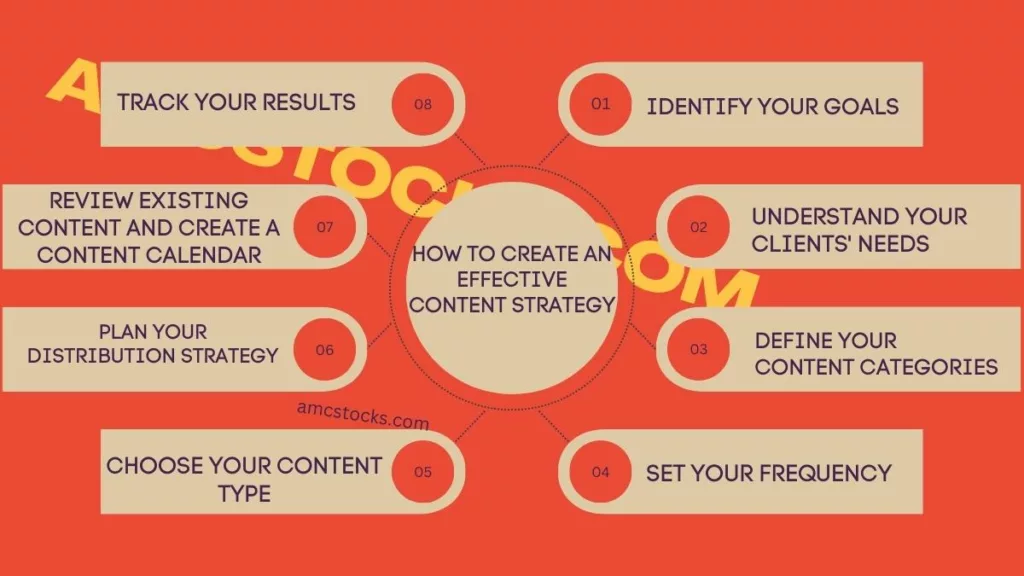Developing an effective marketing strategy is essential for any business looking to grow and succeed in today’s highly competitive marketplace. A comprehensive plan for promoting your business and achieving your marketing goals can help increase brand awareness, generate more leads, and ultimately lead to increased revenue.
To develop a successful marketing strategy, there are several crucial steps you need to follow:
1: Set Clear Goals Effective Marketing Strategy
The first step is to set clear marketing goals. These goals should be specific, measurable, attainable, relevant, and time-bound (SMART). For example, you may want to increase website traffic by 25% or generate 100 new leads per month. Setting clear marketing goals will guide your marketing efforts and help you measure your success.
2: Analyze Your Market and Competition
Conduct market research to understand your industry, target audience, and competition. Identify your unique selling proposition (USP) and competitive advantage. Use tools like Google Analytics, SEMrush, or Ahrefs to analyze your website traffic and your competitors’ strategies. By understanding your market and competition, you can create a marketing strategy that is effective and stands out from the crowd.
3: Define Your Target Audience
Defining your target audience means identifying the specific group of people or businesses that are most likely to be interested in your products or services. It involves researching and understanding your potential customers’ demographics, interests, behaviors, and pain points to create a targeted marketing strategy that resonates with them.
To define your target audience, you can start by answering the following questions:
- Who is your ideal customer? What are their age, gender, income level, education level, and occupation?
- What are their interests and hobbies? What do they enjoy doing in their free time?
- What are their pain points? What problems or challenges do they face that your product or service can help solve?
- Where do they spend their time online and offline? What social media platforms do they use? What events or conferences do they attend?
- What are their buying behaviors? How do they typically make purchasing decisions? What factors influence their buying decisions?
Once you have a clear understanding of your target audience, you can tailor your marketing messages to their specific needs and preferences, which can increase the effectiveness of your marketing efforts and help you reach your business goals.
4: Determine Your Marketing Budget
Decide how much you can afford to spend on marketing and allocate your budget to different marketing channels based on their effectiveness and ROI. Make sure to include costs for content creation, social media ads, email marketing, events, and more. A clear budget will help you maximize your marketing efforts and achieve your goals.
5: Choose Your Marketing Channels
Select the marketing channels that are most effective for reaching your target audience and achieving your marketing goals. These can include social media, email marketing, content marketing, SEO, paid advertising, events, and more. Make sure to choose channels that align with your budget and resources. Choosing the right marketing channels is essential for the success of your marketing strategy.
6: Create a Content Strategy

Develop a plan for creating valuable and engaging content that resonates with your target audience and supports your marketing goals. This can include blog posts, videos, social media updates, email newsletters, whitepapers, case studies, and more. Use your customer persona to create content that answers their questions, solves their problems, and addresses their pain points. A strong content strategy can help establish you as an authority in your industry and drive traffic to your website.
7: Implement Your Marketing Plan
Execute your marketing plan, including creating and distributing content, launching campaigns, and measuring your results. Use tools like Hootsuite, Hubspot, or Buffer to schedule your social media posts and track your performance. Make sure to optimize your content for search engines and mobile devices. Implementation is key to the success of your marketing strategy.
8: Analyze Your Results
Track your marketing metrics and analyze your results to evaluate your performance and identify areas for improvement. Use this data to optimize your marketing strategy and improve your ROI. Regularly monitor and adjust your strategy to ensure that it continues to support your business goals. By analyzing your results, you can identify what’s working and what’s not and make data-driven decisions to improve your marketing strategy.
In conclusion, developing a marketing strategy is crucial for the success of your business. By following these steps, you can develop an effective marketing strategy that will help you achieve your business goals, attract more traffic to your website, and convert them into loyal customers. Remember to stay flexible , you can join us in our quora space to Grow Your Business with Those Marketing Tips
Looking to implement a successful marketing strategy for your business? You don’t have to do it alone! With Fiverr, you can find a talented marketing expert who can help you develop a customized marketing plan that meets your specific needs and budget. Don’t let a lack of marketing expertise hold you back from growing your business. Take action now and hire a marketing expert from Fiverr to get started!




